Escape from Mystwood Mansion is a first-person puzzle videogame set in an eerie house stuffed with intricate riddles. I play as an unnamed delivery driver whose latest package is addressed to Mystwood Mansion, an elegant but slightly dilapidated residence in a temperate, unidentified part of the world. When the player character knocks on the Mansion’s heavy wooden doors, they open, then immediately close and lock when the driver steps inside. A letter on a table sets up how much trouble the player character is in. It begins: “Dear visitor, welcome to my abode of mysteries – MYSTWOOD MANSION.” For the player character to escape the Mansion, I must help them navigate its five huge rooms, solving dozens of interlocking puzzles that unseal the doors leading to the next section. Only by making a full circuit of the Mansion will the front doors open and the player character be allowed to return to their delivery truck and their freedom.

Mystwood Mansion is simultaneously a friendly and spooky environment. The mansion is clean and brightly lit, resplendent with pleasant colors and charming knicknacks; a collection of bird portraits hangs on the wall of the Entrance’s stairwell, the two-story Library is filled with antique books, and a well-kept Winter Garden leads to a cozy breakfast nook. It feels like it would be a quaint and indulgent place to live. Mystwood Mansion is also a giant mousetrap. Doors open and close at the whims of the puzzles that cover every surface. Almost every chest and cabinet is sealed with padlocks, as though the Mansion’s owner is an especially paranoid collector of valuable and dusty artifacts. A security camera hangs in the corner of every room, its staring eye fixed on the player character wherever they move. The player character never encounters another person in Mystwood Mansion, but the cameras are a reminder—they are not alone, and they are being watched.
The player character’s situation becomes stranger the deeper into Mystwood Mansion they delve. They find letters pinned to the doors of some rooms, printed with typewritten text complimenting their progress and describing the coming puzzles, except for the salutary line where handwritten ink refers to them as Subject 83. Behind a hidden door in the Wine Cellar, words are written on a wall in alarmingly red letters beside ominous handprints: “I’m trapped. I’ve been here for seven days. There is no use, I can’t picture how to escape. And the food supply will run out in four days.” These words might be a genuine lament from a previous Subject. They might be an especially ghoulish element of yet another puzzle. It is still clear that Mystwood Mansion is not an inexplicable mystery box, it is a bizarre experiment in which the player character has become the latest involuntary test subject.

The goal in each of Mystwood Mansion’s five rooms is to make the door to the next room open. This seemingly simple task requires the player character to zigzag around the room to interact with objects affixed to nearly every surface. The Entrance hall does a good job easing the player character into what they will encounter inside the Mansion. The door to the Office, the second room, is prominent on the right side of the hall, with four keyholes visible near its center. To escape the Entrance hall, the player character must locate four keys and insert them into these locks.
Finding these keys is deliberately low-difficulty, serving the gameplay purpose of building my confidence and the narrative purpose of further entrapping the player character within the Mansion. One key even hangs in plain sight on a hook on an upstairs landing. The others require more effort. The letter that welcomes the player character to the Mansion has a note at its bottom reading “the code to the briefcase is written on the back.” Flipping the letter over reveals the three-digit code, and inputting it into a briefcase on a nearby table causes it to open. Inside is another key and a diagram of a table, showing a button hidden on one of its sides. Locating this table on the other side of the hall and pressing the button causes its drawer to spring open, revealing a third key. The final key requires the most thought, but the distinctive silhouettes on the wall near a wire connected to a cabinet doesn’t present much of a mystery on where it lies.

Progressing through subsequent rooms is much more difficult. Some puzzle pieces must be used with others to make something happen. Many are documents containing clues, sometimes subtle and sometimes blatant, instructing the player character on how the remaining objects should be used together. It’s not always clear which puzzle pieces fit together. Each room has a dozen or more puzzles to solve and I must use deductive reasoning to determine which of the pieces strewn around the room match. A padlock on a cabinet in the Office has an image of a heart on it, suggesting where its combination may be found elsewhere in the room. A chart scribbled on a chalkboard in the Winter Garden is surrounded by drawings of pine trees, pointing towards the tree-based puzzle where the chart is useful. None of these conclusions require a huge leap of logic. They do require an attentive eye for detail.
The player character’s lone tool for solving Mystwood Mansion’s puzzles is equally flexible and limited. Most puzzle pieces may be picked up and carried elsewhere in the room. This is useful for literally sorting out my thoughts; the player character can take documents and objects I suspect are related and place them near each other on an open tabletop, the surface of a chair, or even the floor when space is limited. For documents containing elaborate instructions, it’s even possible to carry it in the player character’s invisible offhand, keeping its text visible while they manipulate the buttons on a dumbwaiter or telephone. In the Office and Library, I even find myself compelled to sort every book in the room by matching cover. It doesn’t always get results, but it feels like forward progress.
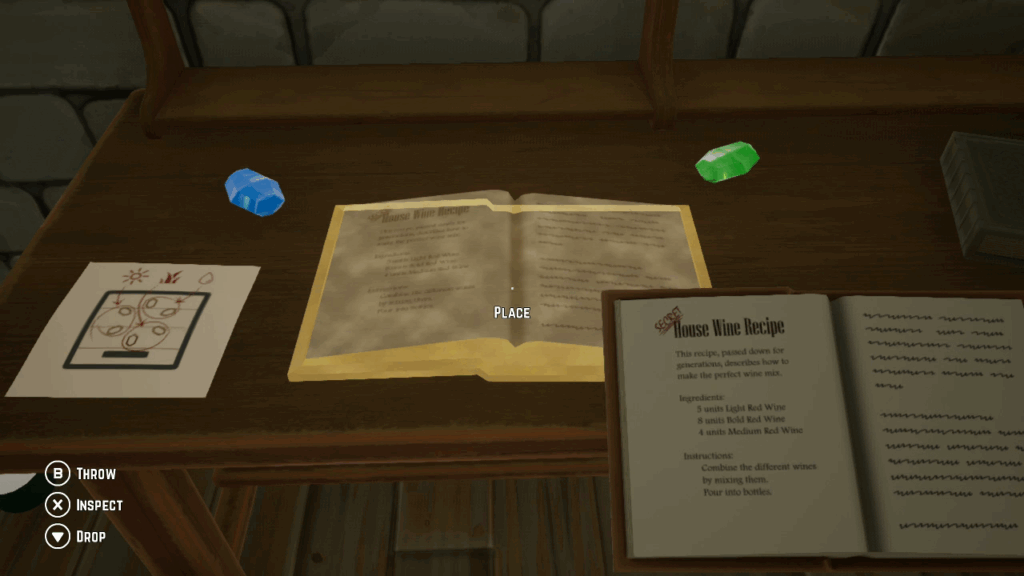
Picking up objects is Escape from Mystwood Mansion demonstrating its flexibility. Putting them back down is where it demonstrates its limitations. The engine is picky about where it will let an object be placed. While carrying a puzzle piece, I may point the tiny cursor at the screen’s center towards a surface. If a translucent copy of the object appears, the item may be placed there. It can take many careful adjustments to make this ghost appear. The more items placed on a tabletop, the more difficult it becomes to find an acceptable spot for every object I may wish to put there, even if there is clear open space for it. If an object seems truly stuck in the player character’s hands, it may be dropped directly on the floor. This has few limitations but is also a poor way to keep puzzle pieces organized. That geode or wine bottle may be important later and it’s easy to lose track of where important things are if they are carelessly dropped on the floor.
Mystwood Mansion’s puzzle designer has a theme and they stick doggedly to it. Nearly every puzzle culminates in some kind of combination lock which opens with a short word or number. Once I notice this tendency, my speed at solving the puzzles increases since I know what I should be looking for. Players who struggle with these kinds of logic puzzles or do not enjoy them will likely be put off by this aspect of the Mansion. There is not a single puzzle inside it they will enjoy. There is also at least one puzzle whose solution is hidden in intermingled lines colored pale blue and red. Upon seeing this, I immediately wonder how colorblind players are meant to recognize this code.
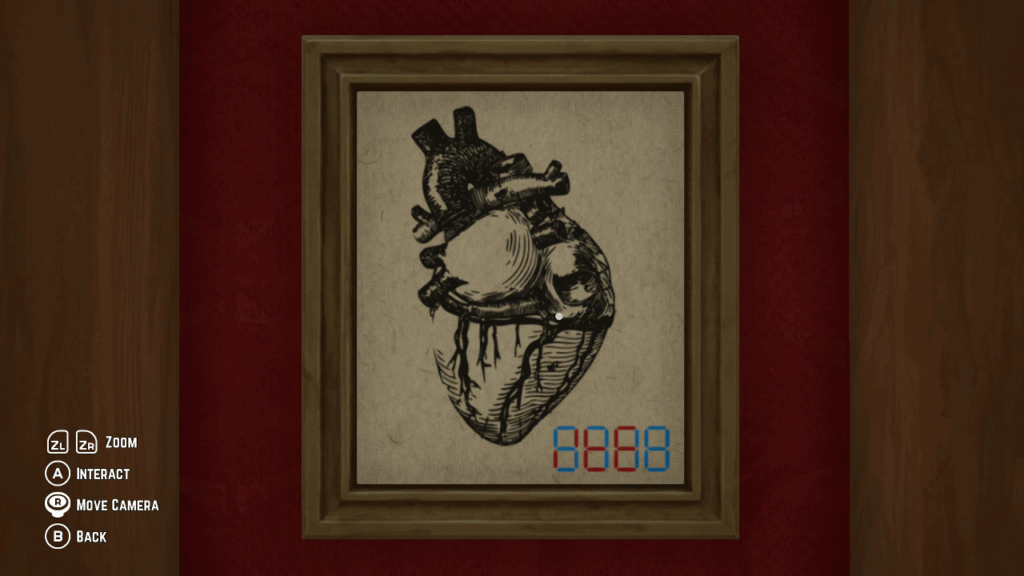
From the main menu, I may choose to revisit any of Mystwood Mansion’s rooms from a Level Select screen. After helping the player character escape, I check this screen again and am confused to see a sixth room still crossed out and inaccessible. It is here that I remember an object in the Entrance hall the player character never interacts with, a massive vault door decorated with symbols and harsh red lights. The player character crosses the threshold of every other door in the Mansion during their escape. It is easy to rush past this one as they claims their freedom.
I sense immediately where I went wrong. The letter that welcomes the player character into Mystwood Mansion concludes with the request, “kindly deliver the package to the mansion’s library.” When the player character gets to the Library, they find a small elevator where they may insert the package. The problem is, they left the package behind in their delivery truck.
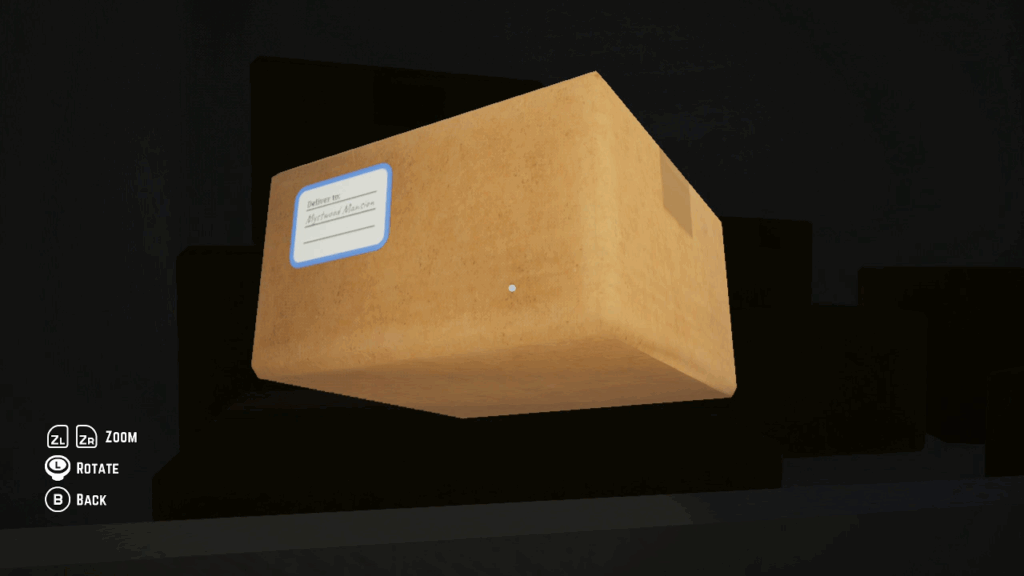
To be fair to the videogame, it’s silly that I sent the player character, a delivery driver, up to Mystwood Mansion’s front door without their package. To be fair to myself, I hadn’t yet learned items may be picked up and carried. I have the player character examine the package in the back of the delivery truck, but leave it sitting there before going up to the Mansion’s front door. After reading the welcome letter, I even try to return with the player character to retrieve the package, but by that point the front doors are shut and locked. I have no choice but to guide them on to the next room empty handed.
In order to make the vault door open and access Mystwood Mansion’s final room, the player character has to carry the package through all five rooms and insert it into the Library’s elevator. There are two other, optional puzzles that must be solved while exploring the Mansion as well. If any of them are missed, the entire videogame must be replayed from its beginning to complete them. It takes me about four hours to puzzle through Mystwood Mansion on the player character’s first visit. For their second, I breeze through in under an hour.
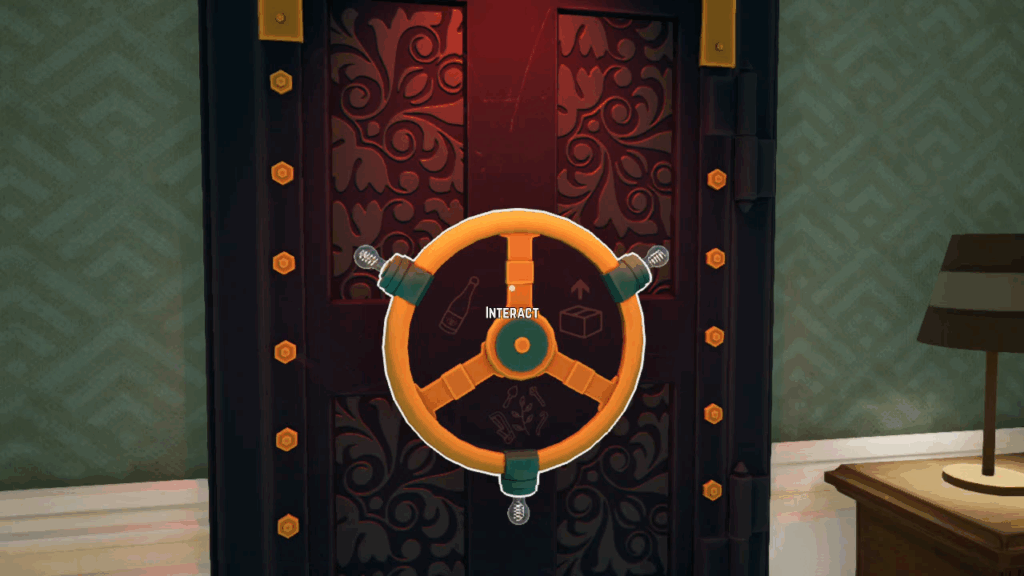
Part of me is annoyed at having to replay the entire videogame to complete a turn-in puzzle which the opening moments arbitrarily seal away. A greater part of me is thankful to speedrun through the puzzles again. It gives me more perspective on their design, a new appreciation for how many are breadcrumbs that lead to a room’s larger solutions and how many are keystones that remove a major obstacle from the player character’s path. They are instantly able to open many doors and padlocks because I remember their combinations from my previous playtime.
The final room is small but contains the Mansion’s most complex puzzles. I successfully solve all other puzzles by memorizing the numbers and letters their solutions produce; the final room is where I am finally forced to get out a pen and paper to take notes.
One, final, padlocked door leads to the room where the Mansion’s owner has been watching the player character through the security cameras and an alternate ending. This ending shows just how long the experiment has been running. It’s obvious from the moment a letter first addresses the player character as Subject 83. I wonder if the player character would have been better off never opening the vault and returning to their ordinary life as a delivery driver. I am unhappy to find more satisfaction from solving Mystwood Mansion’s most difficult puzzle than witnessing the tedious “secret” it protects.
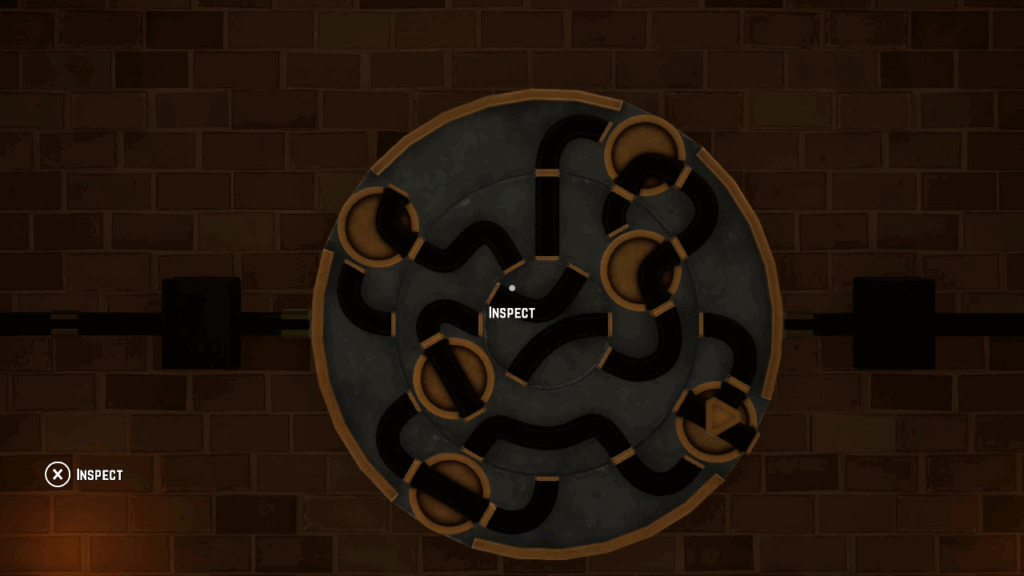
Escape from Mystwood Mansion is a satisfying challenge to my critical thinking skills, though not without some limitations. Its puzzles are laser-focused on producing exactly one kind of solution: The number or letter combination needed to open the dozens of padlocks that seal every door throughout the mansion. I worry that players who struggle with number and letter puzzles will find these too difficult. I find solving them immensely satisfying. The Mansion itself is also well made, finding a good balance between a welcoming atmosphere that doesn’t make the place unpleasant to explore without discarding an ominous suggestion that something sinister is going on inside its walls. Only an alternate ending that is slightly too finicky to unlock and too narratively obvious in its outcome disappoints. I’d be happy to Escape from a second Mystwood Mansion at any time.